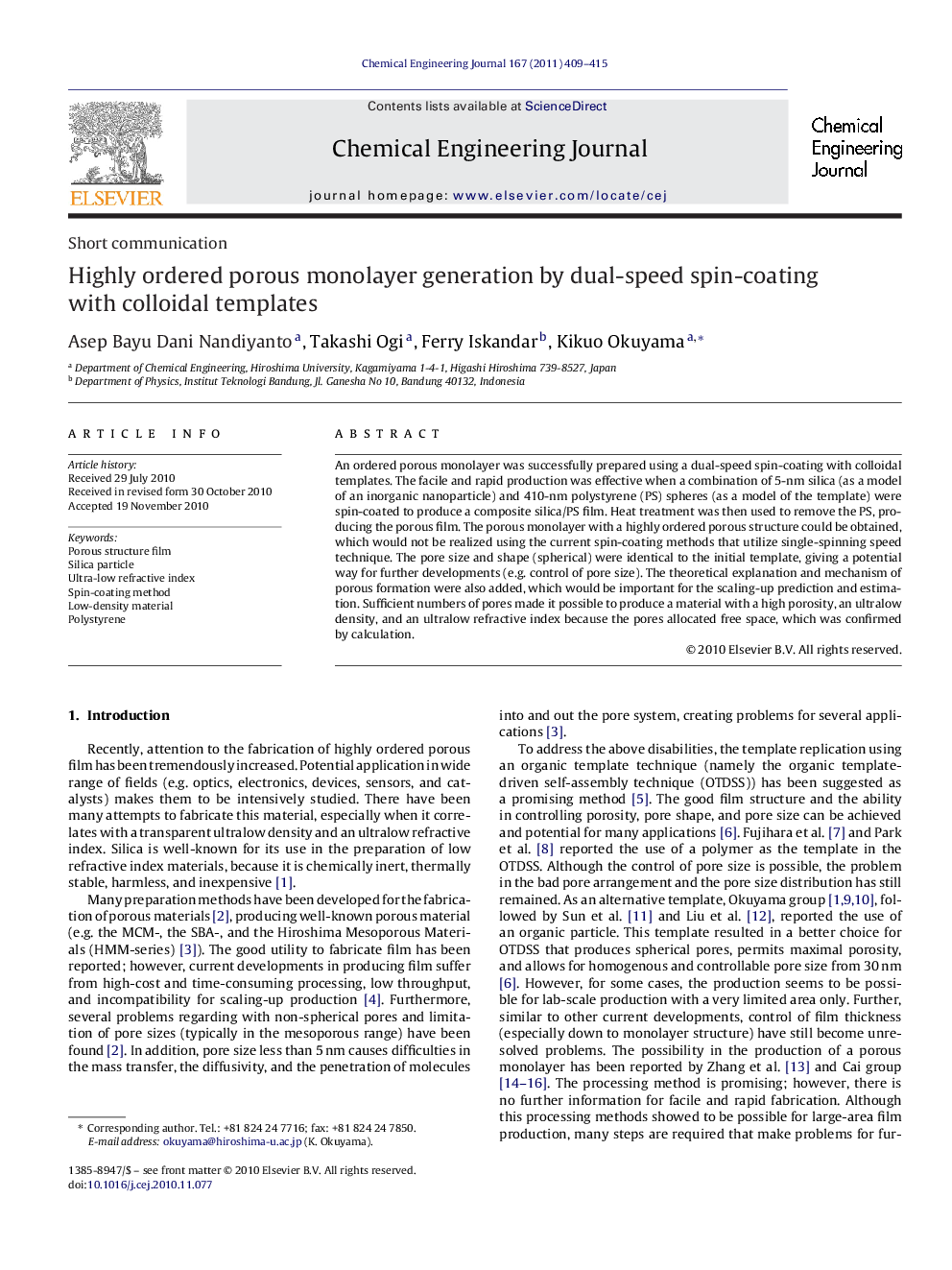| Article ID | Journal | Published Year | Pages | File Type |
|---|---|---|---|---|
| 151650 | Chemical Engineering Journal | 2011 | 7 Pages |
An ordered porous monolayer was successfully prepared using a dual-speed spin-coating with colloidal templates. The facile and rapid production was effective when a combination of 5-nm silica (as a model of an inorganic nanoparticle) and 410-nm polystyrene (PS) spheres (as a model of the template) were spin-coated to produce a composite silica/PS film. Heat treatment was then used to remove the PS, producing the porous film. The porous monolayer with a highly ordered porous structure could be obtained, which would not be realized using the current spin-coating methods that utilize single-spinning speed technique. The pore size and shape (spherical) were identical to the initial template, giving a potential way for further developments (e.g. control of pore size). The theoretical explanation and mechanism of porous formation were also added, which would be important for the scaling-up prediction and estimation. Sufficient numbers of pores made it possible to produce a material with a high porosity, an ultralow density, and an ultralow refractive index because the pores allocated free space, which was confirmed by calculation.
